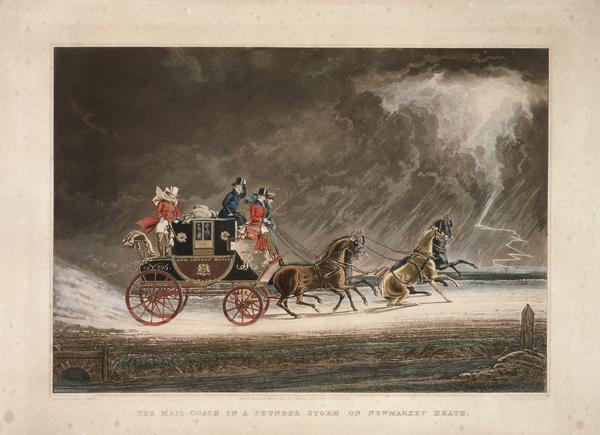For purposes of continuity, the Chinese capital shall be referred to by its old name of ‘Peking‘ throughout this posting.
Anyone who’s seen the 1963 film “55 Days at Peking”, may think that they know all about the events depicted in this legendary epic, starring such names as David Niven and Charleton Heston. But in actuality, as with most historical films, the details and broader picture of the inspirational event have been swept aside, dulled or diluted in the name of dramatic license.
So what really happened during those fifty five days, and what is the wider picture?
The Events in the Film
“55 Days At Peking” is a historical film about the infamous siege of the Foreign Legations in Peking, China, in the year 1900. It is a fictionalised version of a pivotal and groundshaking event in Chinese history.
What really happened? Why were the legations put under siege? What led up to this, and what happened after the siege was lifted? Let’s find out…
China at the Turn of the Century
Chinese history in the 19th century is filled with conflicts and struggles. Two opium wars, foreign invasions and occupations, drug-trafficking, Christian missionaries, Western interventions, humiliating trade and concession-treaties…the list goes on.
Between the legalisation of opium, the opening of the Treaty Ports, and the loss of Hong Kong, China was steadily being carved up by each of the great powers of the world – Great Britain, the United States, France, Germany, Russia, Italy, and the rising power of the Empire of Japan.
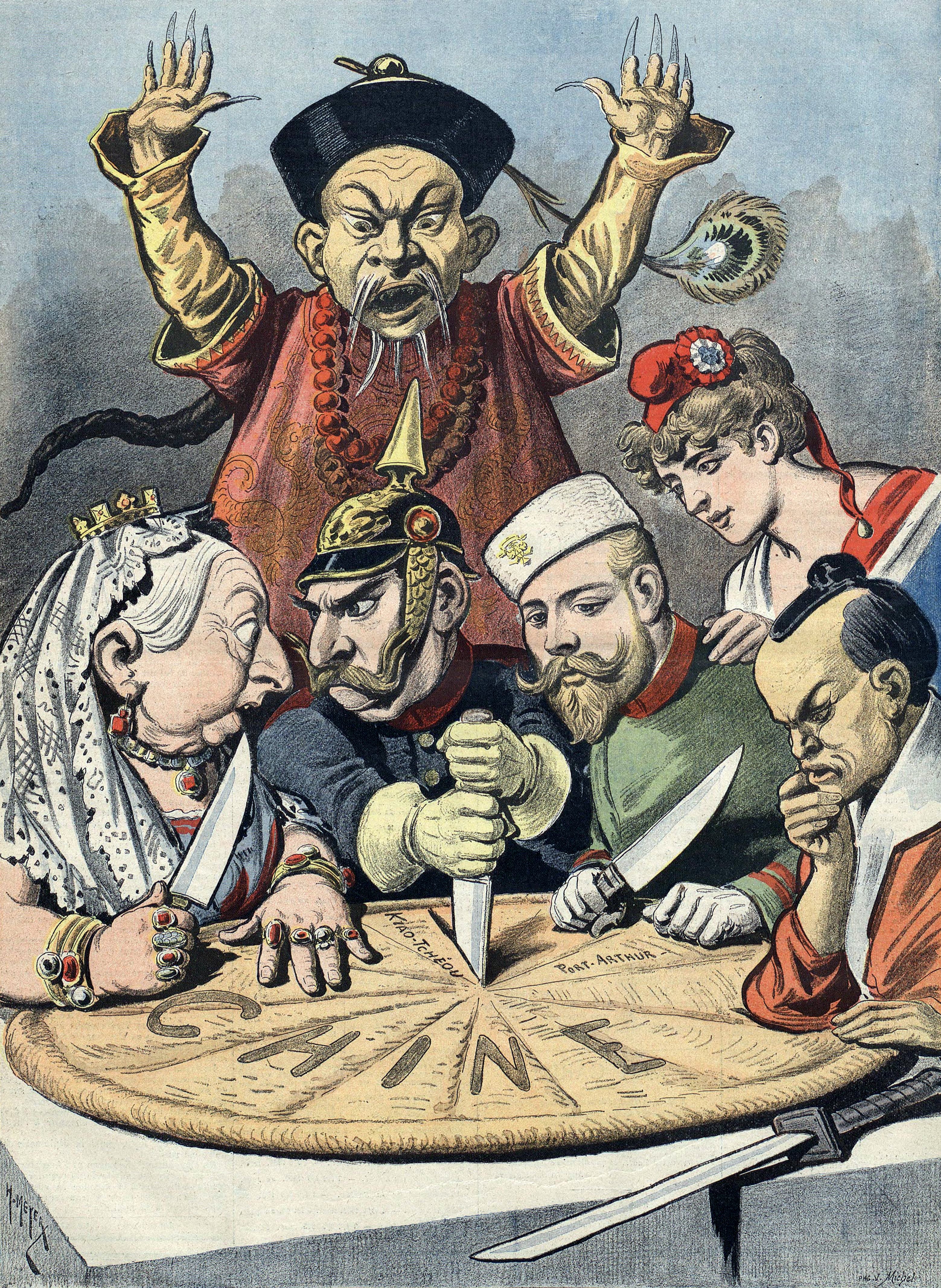
This famous French cartoon from the turn of the century depicts China as a great pie being carved up by the foreign powers. From L-R: Queen Victoria (Britain), Kaiser Wilhelm II (Germany), Tsar Nicholas II (Russia), Marianne (France), and the Emperor of Japan. Behind, a Chinese Mandarin looks on in horror as his country’s fate is decided and divided
By the 1890s, the foreign powers have set up enclaves and concession-zones in almost all major Chinese cities. Canton, Shanghai, Tientsin, Nanking, and the ancient imperial capital city of Peking. Each has its own foreign concession-zones held by the Western powers and by the Empire of Japan. In Shanghai, it is the infamous Shanghai International Settlement, which would become notorious for fast living, gambling, drugs, racing, prostitution, gangsters and expensive lifestyles. In Peking, it is the walled citadel of the Peking Legation Quarter, where foreigners live in isolated splendor, immune and untouchable from and by the Chinese who dwell from without their confines.
In previous generations, the idea of “Barbarian” legations, concessions and embassies within China was unthinkable, and certainly not in the ancient Imperial capital of Peking! But China, weakened and humiliated by defeat after defeat, was forced to allow the Western powers to set up their quarters just miles from the Forbidden City, the seat of Chinese imperial power for centuries.
Foreign presences in China were deeply resented. Christian missionaries desecrated Chinese temples and shattered Chinese belief-systems, insulting centuries old traditions and customs. Chinese ports were run by Western merchants, particularly in Shanghai and Canton. Soldiers, marines and guards from all nations were stationed in and around foreign settlements to protect the civilians and diplomats who worked in or near to their concession-zones.
The foreigners enjoyed diplomatic immunity in China – They could not be prosecuted under Chinese law, another injustice which the Chinese were infuriated about. And they imported opium into China, which had previously been illegal. Despite all the stereotypes about doped up Chinks lying on beds huffing away at their pipes, the Chinese themselves had long fought to REMOVE opium from China – it wasn’t even grown there! It came from British India in trade-ships sailing for the foreign-controlled treaty-ports.
The Peking Legation-Quarter
Established in the 1860s after the Second Opium War, the Peking Legation Quarter was originally a hodge-podge of European consulates, legations and embassies, established and built within an area east of Tienanmen Square, partially divided from the rest of Peking by enormous and ancient defensive walls. Over time, it grew and became the heart of foreign, mostly Western life, in the middle of Imperial Peking.

The Peking Legation Quarter, 1912. Click the image for a higher resolution to read the text beneath the map
The Quarter held the embassies and diplomatic missions of many of the most prominent Western powers, along with several smaller ones. Housed within the compound, or on the land immediately outside it, were embassies and legations belonging to…
– The United States.
– The Kingdom of Belgium.
– The French Republic.
– The German Empire.
– The Russian Empire.
– The Japanese Empire.
– The British Empire.
– The Kingdom of Spain.
– The Kingdom of Italy.
– The Austro-Hungarian Empire.
– The Dutch Empire.
Showing the extent of foreign interest in China, there was even a Mexican Legation within the Foreign Legation Quarter!
Also included within, or immediately without this partially-walled community was a power-station, two hospitals, post-offices, shops, banks, a telegraphic office, the offices of the Peking-Hankou Railroad, the offices of the Peking-Mukden Railroad, two hotels, houses and villas, one church, and an English-style men’s club. Even the Peking branch of the Hong Kong-Shanghai Banking Corporation was located here. Sound familiar? Today it’s called HSBC.

The Legation Quarter, Peking
For thirty-nine years, Westerners and foreign Asians lived within the walled diplomatic compound, ignorant and uncaring of China. But at the turn of the last century, everything went pear-shaped.
The Boxer Uprising
Growing resentment of foreign influence, control and abuse in China was beginning to cut deep. China had been defeated in war, humiliated by treaties, and corrupted by the introduction of opium. Chinese were getting fed up of their ways of life, and their culture being attacked, fed up of their cities being overrun by Western barbarians, and were tired of having to trade with Western merchants on their terms.
In 1897, a society was formed. Officially, it was called the Society of Righteous and Harmonious Fists! To the Western press, it was simply called ‘The Boxers’.
The Boxers were a loose gathering of groups, which all shared the beliefs and goals that Western domination in China had to end, and that Westerners themselves had to be driven out of China, to preserve a way of life that had remained unchanged for thousands of years.
Foreign imperialism and colonisation, the settting up of concession-zones and other Western activities had ruined the lives of these people – they could no longer visit certain parts of their own cities and towns, which were under foreign control – they could no longer do business on their own terms.
They had their lives disrupted by Christian missionaries who were actively moving through the Chinese interior, setting up churches, monasteries, and destroying traditional Chinese belief-systems centuries old. Ancestor-worship, Buddhism, Confucianism, and Taoism were out. Jesus, God and the Holy Cross were in. Imagine being raised to believe one thing for generations, only to have strangers from across the seas show up and tell you overnight that your entire way of life was backwards, heathen, immoral and above all…UN-CHRISTIAN!!
And you can’t do anything about it. You can’t complain to imperial officials or village elders or city politicians – these priests and missionaries all have diplomatic immunity – they can show up, destroy everything – and there’s absolutely NOTHING you can do about it.
These attacks infuriated the Boxers, and they resolved to put an end to them.
All these grievances finally exploded in the late 19th century, resulting in targeted raids on any and all Christian missionaries in China. No heed was paid to which country they came from, or which denomination they preached of, they were attacked and slaughtered without pause or mercy.
Word by letters and telegrams spread around China’s coastline, from Nanking to Shanghai, Canton to Peking. Western refugees flooded the population-centers of China. Telegrams were cabled across the Atlantic and Pacific to foreign governments in London, Washington, Paris, Moscow, and Tokyo, to name but a few. By the close of the 19th century, the situation is going increasingly desperate.
German, Russian and French governments were quick to act, sending detachments of troops from their South Pacific colonies to China. From Indochina came French soldiers, from Port Arthur came the Russians. In the United States, any sense of panic and fear is dampened, the government doesn’t think that there is any reason for undue alarm.
The Chinese Reaction
From the famous Forbidden City in Peking…nothing.
The Qing Government does not actively support the Boxers…but on the other hand, they don’t really want to STOP them, anyway. As Boxers go from town to town, local government officials do not bother to halt their advances, or to arrest their leaders. There are no prosecutions of the Boxers in courts of law.
Ruler of all China, the Empress Dowager, Cixi (“See-Chee“) begins to see that the Boxers may actually be of help to her. If she can harness their anger and rage towards the foreigners, she might be able to drive out the devils and restore China for the Chinese! She gives the order that the Imperial Army is to back up and actively assist the Boxers in driving out the Western powers!
Eventually, the Boxers reach and occupy many major cities, including Peking and the city of Tientsin. Here, they lay siege to the foreign communities within the city boundaries.
The Start of 55 Days
On the 19th of June, 1900, the Imperial Court issues a decree – All westerners and foreigners MUST leave Peking and its legation quarter within 24 hours. They are to pack their bags, trunks, furniture, whatever they can push, pull or carry, load it onto the nearest railroad train, and leave the capital for Tientsin by 4:00pm the next day. If, by that time they have not complied, the Boxers, with Army support, are given permission to open fire against the Legation Quarter and start an all-out assault against the foreigners.

Legation Street, Peking
The foreign powers decide not to leave by majority vote. To set foot outside the walls of the Legation Quarter is almost certain suicide, as proved by the murdering of the German foreign minister, Baron Von Ketteler, as faithfully depicted in the film, ‘55 Days at Peking‘. They do not wish to tempt fate.
At 4:00pm on the 20th of June, 1900, the deadline expires. From this point on, all foreign diplomats, their families, their friends, businessmen, religious missionaries, civilian expats, and Chinese Christians holed up inside the Legation Quarter can be attacked at any time from any side, by the Boxers and the Imperial armed forces of the Qing Empire.
The legations are woefully unprepared for surviving the trap they’ve caught themselves in – Of 3,700 people, there are only 409 soldiers. Of 409 soldiers, most do not have weapons. Those which have weapons have only the ammunition which is loaded into it. Only the United States Marines, recently arrived, have sufficient ammunition for any serious engagement.
Their heavy armaments include three machine-guns and two cannons. Just like in the film, there really was a cannon nicknamed “Betsy“, and just like in the film, it was quite literally made from bits and pieces found all over the compound, from older firearms. Because of this, it also had the nickname of “The International”, because its various components of barrel, ammunition, carriage and wheels were taken from all corners of the Legation Quarter!
The Siege of the Peking Legation Quarter
Initially, nobody knew what was going to happen – defenders had no clear idea on how they would defend themselves against an attack that might never come, and the Chinese had no clear plan on how to attack the legations and what sort of resistance they might encounter.
Within the Legation Quarter, certain strongholds developed. The British Legation, as the largest structure, became an unofficial headquarters of the siege. Some legations which were too isolated from the others were abandoned, and their civilians and diplomatic staff moved into legations which were closer to the others.
Of crucial importance was protecting the walls which surrounded the Legation Quarter, in particular the Tartar Wall, which formed the southern boundary of the bulk of the Legation Quarter. If Boxers or Qing army forces scaled the wall, they could fire straight down into the streets, having an unobstructed field of fire running the entire length of the compound. The wall is shown at the bottom of the Legation Quarter map, further up in this posting.

U.S. Marines stationed within the Legation Quarter, 1910. The huge structure behind them is the Tartar Wall. The tower to the right is the Chien Men, one of the gates into the Legation Quarter
The Situation with the Legations
The Quarter had sufficient food and water, but nowhere near enough medical supplies, ammunition, fighting men, or weapons. Anything and everything that could be pressed into service was used. Women filled sandbags, 15 bags an hour, 360 bags a day. Chinese Christians constructed barricades along the streets, bridges and crossroads within the Quarter in the event of a hostile breakthrough. Throughout the siege, constant Chinese attacks forced the defenders to retreat back from their eastern barricades several times.
The British Legation was heavily fortified and hospitals and sickrooms were improvised in basements of major buildings.
Roughly half the Legation Quarter had walled boundaries. To the South, the Tartar Wall, To the north, walls which made up the ancient Imperial City also served as a boundary. To the east and west, there were no such walls. In the event of an attack from these directions, buildings were fortified and barricaded, and roads had blockades built across them made of sandbags and furniture.
The Start of the Siege
In the beginning, nobody really knew what was going on. There were divisions within the Chinese government about what to do with the foreigners. Force them to evacuate? Storm the Quarter? Orchestrate a ceasefire? Sign a truce?
Everything was up in the air.
The real fighting did not start until three days later. Trying to smoke the foreigners out, the Boxers and the Qing set fire to many buildings within the Legation Quarter. One of them was the Hanlin Academy. Housed within were several priceless and irreplaceable books and other records. Their destruction infuriated both sides, and at the same time, neither side agreed to take responsibility for the library’s destruction.
From then on, fighting was almost nonstop for nearly a month. From the 23rd of June until the 17th of July, battles were almost daily occurrences, despite attempts on both sides to quell the violence.
Fighting was particularly brutal around the Chien Men (modern Pinyin: “Qianmen“), or ‘Front Gate’ of the Imperial City, the walls of which made up some of the Legation Quarter’s boundaries, such as the Tartar Wall.

The ‘Qianmen’ today, in the background
Explosives and cannons were used to try and breech the massive gatehouse. The photograph below, taken shortly after the siege, shows the sheer level of destruction wrought upon it. The entire top third of the structure has been blasted away in the fighting. Compare it with the photograph above to see the full extent of the damage.

After the Siege. Destruction to the ‘Qianmen’ of Peking
Fighting around the gate and the nearby Tartar wall which it punctuated, was intense. It was defended by a mix of Americans and Germans trying to drive off a force of thousands of Chinese who used scaling-ladders to climb the walls and push the defenders off. The Boxers and Qing did temporarily occupy the wall, but before they could do any serious damage, they were driven off and never again managed to retake this position.
The International Response
For over a month, until late July, no word got in or out of the Legation Quarter. Telegraph lines to the coast and other cities had been cut by the Boxers, preventing electronic communications. On the 28th of July, the first message from the outside world entered the besieged Legation Quarter. The message: Help was on the way!…eventually.
The First Relief-Attempt
The first attempt to break the siege of the Legation Quarter came just days after it started – On the 26th of June, 1900, Vice Admiral Edward Hobart Seymour tried to break the siege using a combined international force numbering 2,000 men, from Britain, Germany, Russia, Italy, Japan, France, the United States and Austria-Hungary.
This was not the famous Eight-Nation Alliance, it was a small band, a mix of soldiers and sailors from various nations all with a common purpose, up against a force more than twice their number (5,000 Chinese strong).
This relief-attempt came at the request of British Minister to China, Sir Claude Maxwell MacDonald (1852-1915), who sent a telegram for help, informing the outside world that the situation within Peking was deteriorating by the hour, and that soon, the whole situation could go up in flames.
The Seymour Expedition, as it was called, was a failure in every sense of the word. They were attacked every step of the way to Peking, and then attacked every yard they retreated. Railroads were sabotaged, bridges blown up, and the Expedition itself was running out of food – they hadn’t brought enough to last them there AND back! – They assumed that, once their mission was successful, they could restock their supplies and head home. The idea that they would have to make their supplies last twice as long as they needed to, or to bring extra supplies, never crossed their minds.
The Second Relief-Attempt
While the soldiers of the Legation Quarter had been fighting for their lives, the governments of the foreign powers represented within the Quarter had been organising military relief for the besieged. This came in the form of the Eight Nation Alliance.
In this alliance, between Austria-Hungary, Germany, Russia, France, America, the United Kingdom, Japan and Italy, the collected countries pooled their colonial military resources and resolved to send a relief column to China to break the siege.
Coming from India, Hong Kong (British), Indochina (French), Port Arthur and Vladivostok, (Russian), the Philippines (American), Japan, Port Athur (again!, this time, Austria-Hungary), Tsingtao (German), and finally, Italy, the various military detachments converged on the northern Chinese coastline in July of 1900.
Among the people who came to answer the call of distress from the Legation Quarter was one Capt. Georg Ludwig Von Trapp, as an officer of the German Navy. Sound familiar? The life of his family was immortalised in the film ‘The Sound of Music‘.
If the Eight Nation Alliance thought that ploughing through China to Peking was going to be easy, they had another think coming. Landing on the Chinese coast in an assortment of naval vessels, the military detachments marched through China.
First, they had to blast through Teintsin. Here, the Boxers and Imperial Chinese forces held back the Eight Nations for an amazing…24 hours, from the 13th-14th of July.
Even after making their way through Teintsin, the Eight Nation Alliance would not reach Peking for another month. On the 13th of August, they were still five miles away, and fighting for every yard.
The End of the Siege
The Eight Nation Alliance finally reached Peking on the 14th of August. At the time, Peking was still an ancient, walled city. There was a wall around Outer Peking. Then another wall around Inner Peking. Then a wall around the Imperial City. And another wall around the Forbidden City. Peking was a gigantic Russian nesting-doll with the Empress Dowager as the tiny dinky toy in the very center.
To break the siege, the Eight Nations divided their forces and they each attacked a gate leading into the Outer City or Inner City. The Legation Quarter was between the two cities, so this strategy would ensure that the Qing and Boxers would be attacked from both sides.
The British got there first at 3:00pm. The Americans arrived two hours later.
The French never did reach their objective – they got lost on the way.
With such a show international military might, the Chinese forces retreated. The siege was officially lifted and ended on the 14th of August, 1900.
It had lasted fifty-five days.
The Aftermath
Military casualties of the siege were appalling. The Foreign powers within the Legation Quarter had not collapsed to Chinese aggression, but they had just about exhausted their ammunition supplies, and had lost 45% of their total fighting-force. Their original lines had fallen back on the Eastern side, and there were thirty-seven civilian casualties and injuries.
To ensure no repeat performance of a similar kind, the Foreign Powers occupied Peking. Cixi, the Empress Dowager, fled from the Forbidden City with her entire court. She wouldn’t return until 1902!
What happened after the ending of the siege is not recorded in the famous 1963 film…probably because it isn’t very pleasant.
Prior to the lifting of the siege, false news-reports were somehow telegraphed to the Western world. How is uncertain, due to the fact that electronic communications had been severely interrupted by the siege. But the information claimed that the Chinese had forced the entrances of the Legation Quarter, stormed in and had shot, beheaded, bayonetted or otherwise killed every man, woman and child within the Legation Quarter.
By the time this news-report was discovered to be nothing more than a Chinese hoax to piss off the Western powers, it was too late.
Filled with hatred over the apparent atrocities, the assembled Western powers and the Japanese, raided, robbed, raped, burglarized and trashed Peking. They even forced their way into the Forbidden City, something unheard of in the history of China, and ransacked the palace buildings, stealing priceless antiques and artifacts centuries old, and shipping them back to Europe.
When the Chinese newspaper hoax was finally proven, the Europeans and Americans found themselves doing a lot of soul-searching. Famous American novelist, Mark Twain, was just one of thousands who forced the Western powers to consider their motives and actions in China, and the morality of forcing their cultures and religions upon a country which not once had raised a hand in war against them, except to protect their own way of life.
More Info?
In Search of History: The Boxer Rebellion
Trove.nla.gov.au – Sydney Morning Herald – Thursday, 22nd Nov., 1900.

 Winston Churchill tipping or doffing* his trademark homburg,
Winston Churchill tipping or doffing* his trademark homburg,  Chinese Knuckle-Tapping
Chinese Knuckle-Tapping The Kowtow. Literally meaning ‘Knocking Head’ (Kow – ‘Knock’, Tow – ‘Head’), this ancient Chinese form of respect lasted well into the 20th century, but is rare today
The Kowtow. Literally meaning ‘Knocking Head’ (Kow – ‘Knock’, Tow – ‘Head’), this ancient Chinese form of respect lasted well into the 20th century, but is rare today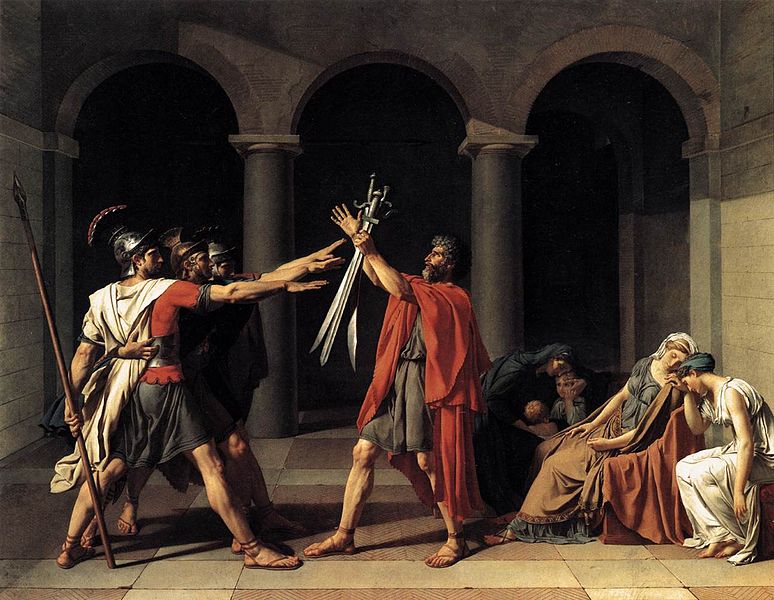
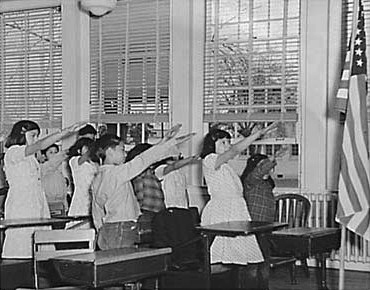 Before the war – American school-children saluting the flag, 1941
Before the war – American school-children saluting the flag, 1941 After the war – American school-children pledging allegiance to the flag, 1950s
After the war – American school-children pledging allegiance to the flag, 1950s
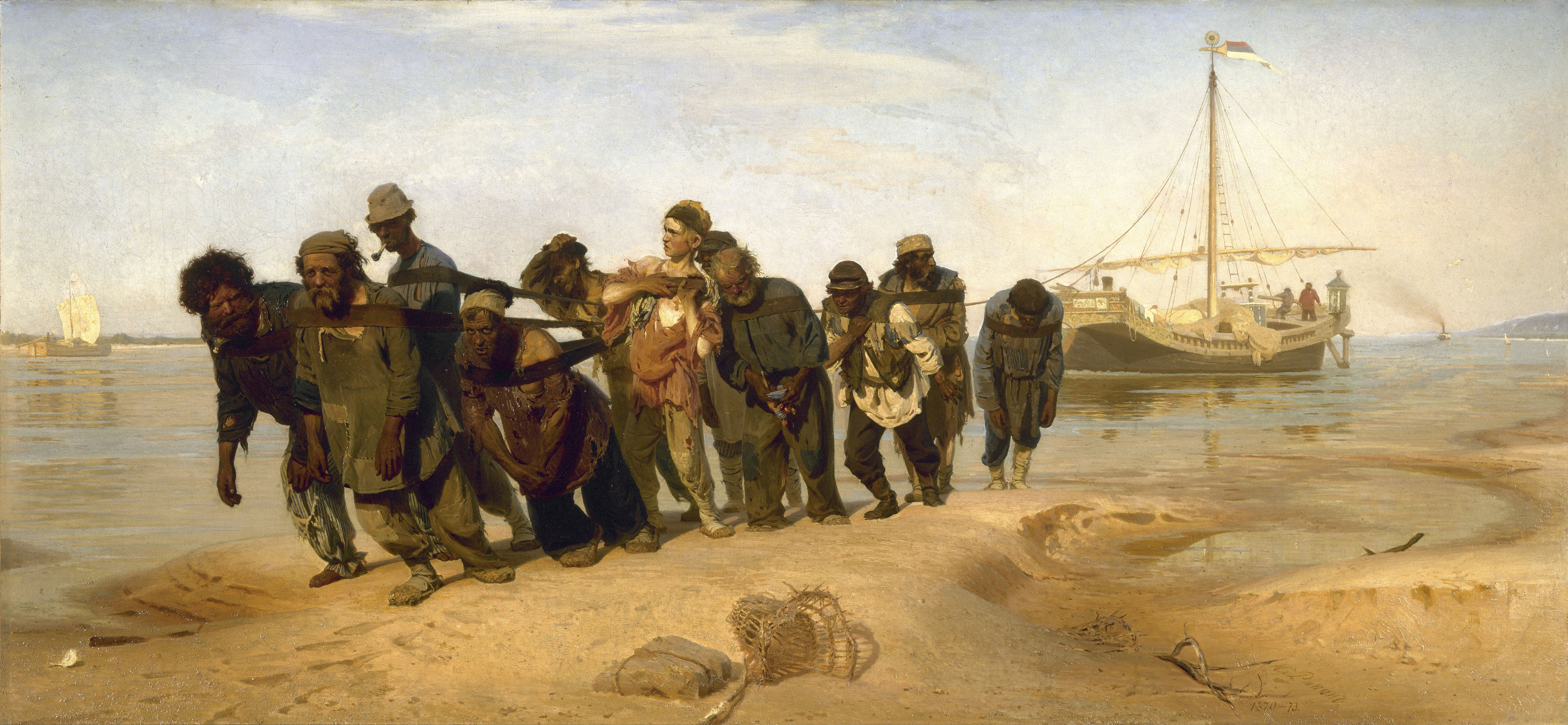 Barge-Haulers on the Volga (1873), painted by Ilya Y. Repin
Barge-Haulers on the Volga (1873), painted by Ilya Y. Repin Books, ca. 700.A.D.
Books, ca. 700.A.D. 



 The old Tempelhof Airport, Berlin
The old Tempelhof Airport, Berlin
 Come fly with me, let’s fly, let’s fly away…
Come fly with me, let’s fly, let’s fly away…
 Welcome to…’The Beehive’!
Welcome to…’The Beehive’!
 La Guardia Airport, 1940s. Note the seaplane dock, for Pan Am ‘clippers’
La Guardia Airport, 1940s. Note the seaplane dock, for Pan Am ‘clippers’

 Weeeeeeeeeeeeeeeeeeeeeee!!
Weeeeeeeeeeeeeeeeeeeeeee!!
 A Steinway ‘Victory Vertical’ piano, sourced from pianoworld.com
A Steinway ‘Victory Vertical’ piano, sourced from pianoworld.com Dr. Eduard Bloch in his medical office in Austria, 1938. Two years before he fled to America with his family
Dr. Eduard Bloch in his medical office in Austria, 1938. Two years before he fled to America with his family

 My fireplace in winter.
My fireplace in winter.
 Brass andirons in a fireplace
Brass andirons in a fireplace Andirons at work, supporting a stack of burning firewood
Andirons at work, supporting a stack of burning firewood The grate in my fireplace
The grate in my fireplace.jpg) A brass fireplace fender. Fenders are freestanding, and they can be moved to more easily clean the fireplace between uses
A brass fireplace fender. Fenders are freestanding, and they can be moved to more easily clean the fireplace between uses



 Antique cast iron fireback
Antique cast iron fireback The reflector placed behind the grate in our fireplace. A homemade affair easily fashioned out of sheet-metal, a few screws and some metal bars
The reflector placed behind the grate in our fireplace. A homemade affair easily fashioned out of sheet-metal, a few screws and some metal bars The Great Fire of London Screen!
The Great Fire of London Screen! Chim-chimney-chim-chimney-chim-chim-cheree,
Chim-chimney-chim-chimney-chim-chim-cheree, 
 An antique silver vesta case. Note the striking-ridges on the bottom
An antique silver vesta case. Note the striking-ridges on the bottom
